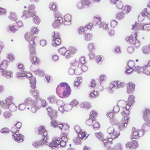WASHINGTON, D.C.—Rheumatic skin diseases in patients of color often manifest in ways that defy the classic signs and can require a deeper look to make sure patients are diagnosed promptly, said Ginette Okoye, MD, professor and chair of dermatology at Howard University College of Medicine, Washington, D.C., in a session at ACR Convergence 2024.
And in another presentation, Laura Hummers, MD, ScM, co-director of the scleroderma center at Johns Hopkins University, Baltimore, described the many conditions that can mimic scleroderma. The similarities can cause confusion for clinicians, but that can be overcome if you are familiar with important subtle differences.
Melanin & More

Dr. Okoye
Because skin diseases are so often diagnosed when erythema appears, darker skin can make identifying a problem more difficult, said Dr. Okoye.
“Melanin can mask erythema, it can mask redness, and we’re taught to look for redness when we’re trying to diagnose skin conditions,” she said. “And so if [the patient’s] melanin is masking that, it can lead to delays to diagnosis.” In people with darker skin, erythema could be red or purple, but it could also be dark brown, or bluish-black, she said.
She discussed a patient of color with psoriasis, who, like many other patients, had some erythema but the redness was not the most prominent feature, “so really we’re relying on some of the other patterns that we see in skin disease” for diagnosis. These include the location of plaques and whether there is scaling, she said.
Dr. Okoye said clinicians should be comfortable ordering a biopsy when they are unsure what they are seeing on their physical exams. Since coming to Howard University, she said, “I have biopsied more psoriasis that I had in my career up until that point because I’d been fooled so many times.”
She discussed a patient with psoriasis on her scalp who had been diagnosed with seborrheic dermatitis for many years, with the only give-away being the pits in her nails. In these kinds of cases, with psoriasis involving the scalp in patients of African descent and with curly hair, she prescribes biologics very early on because the challenge of maintaining this hair type with psoriasis leads to quality-of-life struggles.
In a patient she discussed involving juvenile dermatomyositis, which typically involves a purplish heliotrope rash as a telltale sign, there was “no purple to be found.” Instead, there was only subtle hyperpigmentation and hypopigmentation.


